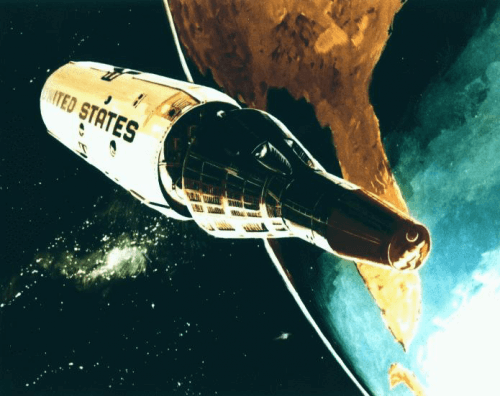This was a military program of the Air Force designed to test how humans in orbit around the Earth could promote the defense program of the United States and in particular tracking, locating, launching and intercepting military missiles

The first space laboratory planned by the United States was the MOL - Manned Orbital Laboratory. This was a military program of the Air Force designed to test how humans in orbit around the Earth could advance the defense program of the United States and especially tracking, locating, launching and intercepting military missiles.
For this purpose, the laboratory was equipped with large cameras and a radar capable of side vision. The plan was to send teams of two astronauts to this space laboratory that was supposed to circle the Earth at different angles and also in a polar path. The launch of the astronauts was supposed to take place in a sophisticated Gemini B spacecraft. The length of the space laboratory is 12.7 meters, its small diameter is 3.05 meters, its largest diameter is 3.2 meters, its weight is 8.6 tons and the weight of the equipment is 2.7 tons. The volume of the laboratory is 11.3 cubic meters. According to the plan, the Gemini spacecraft would connect to the laboratory from the rear (of the Gemini). After the connection, the astronauts would put on space suits and leave the spacecraft and while floating in space they would approach the entrance of the laboratory and through it enter it.
Throughout its flight, the third stage of its Titan 3 launcher was attached to it. This would have made it possible to increase the flight speed by 27.4 km/h to perform maneuvers. The lifespan of the laboratory is 40 days. The laboratory's power source is fuel cells or solar arrays. To build the laboratory, it was decided to use the fuel tank of the Titan 2 launcher. The intention was to build a two-story laboratory with the separation between the floors being a walking shelf. This concept was used in the construction of the Skylab space laboratory. For this purpose, the third stage of the Saturn 5 launcher was used. This laboratory is also two-story, but this time the separation between the floors is complete.
They started working on this plan in the sixties of the twentieth century. Despite the selection of 16 military astronauts and their training in 1967, the program did not meet the schedule. The first manned launch was postponed from the beginning of 1967 to the end of 1971. At that time, the reactor exceeded this plan due to President Richard Nixon's cuts in the overall budget of the United States. The consideration to cancel the MOL follows a cost analysis that led to the conclusion that it is cheaper to launch spy satellites than to develop and build a manned space laboratory. Some of the MOL's equipment was transferred to Skylab.
An article with drawings of the MOL space laboratory
About the spacecraft on Wikipedia (English)

3 תגובות
Garbanboli
Let's look at it the other way around. Governments will listen to wise men like you, and ignore an approaching asteroid in 2088.
I wonder what you will say then 🙂
In 2088, governments will invent a quick threat to the world. Let's say an asteroid. And launch a global operation. Which will involve huge expenses.
And that was the replacement
to wars.
Indeed it seems that the most effective promoter of science is the military industry.